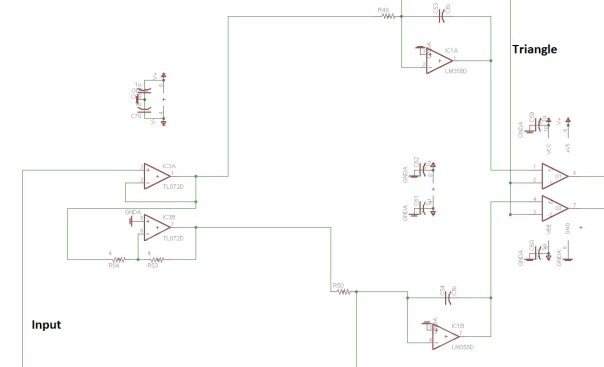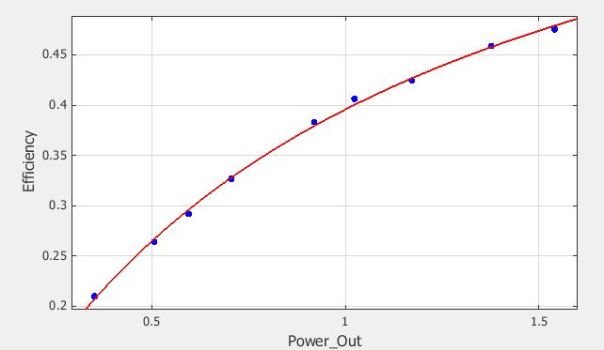Portable Electrostatic Headphone Amp
I’ll be going home for winter break, and don’t want to carry my big electrostatic amplifier, so I decided to make a Class-D portable amplifier.
Here are a few schematics… Eagle is too much of a pain to make nice schematics, so I’m not going to post a full schematic at this point.
Aside from the actual amplification stage, I need to make 300V rails and and a 350V bias rail (configurable for up to 580V) to charge the diaphragm in the headphones. To do this I’m using the LTC3803 flyback controller. This is a current-mode control chip with an external compensation network in a convenient SOT-23-6 package. I wanted to test this out before ordering the full board, so I built a prototype converter for the
300V rails (if that works, the DC bias flyback will almost surely work).
Tests show it working fairly well, although it draws quite a bit of no-load power. I attached a BJT as the load so I could vary the output current to plot efficiency vs. output, which resulted in the following data:
I fit the equation
which represents a constant controller current (including core losses with the output load of the feedback resistors). This fit results in a controller power draw of 1.25 0.05W and an efficiency of 0.78
0.04. This is a bit high on the controller power draw, which I may be able to get a bit lower by not using the shunt regulator in the controller. Efficiency could be better, but is quite tolerable given that the amplifier really won’t draw much of any current on the
300V rails.
Posted on November 11, 2012, in Uncategorized. Bookmark the permalink. 2 Comments.




Did you finish your portable electrostatic headphone amp? (I just got into electrostatic headphones about a month ago and am already wishing there were something more portable than my beat-up 30-year-old stax srm-1/mk2.) -vinh
Unfortunately no, I never actually built this design.